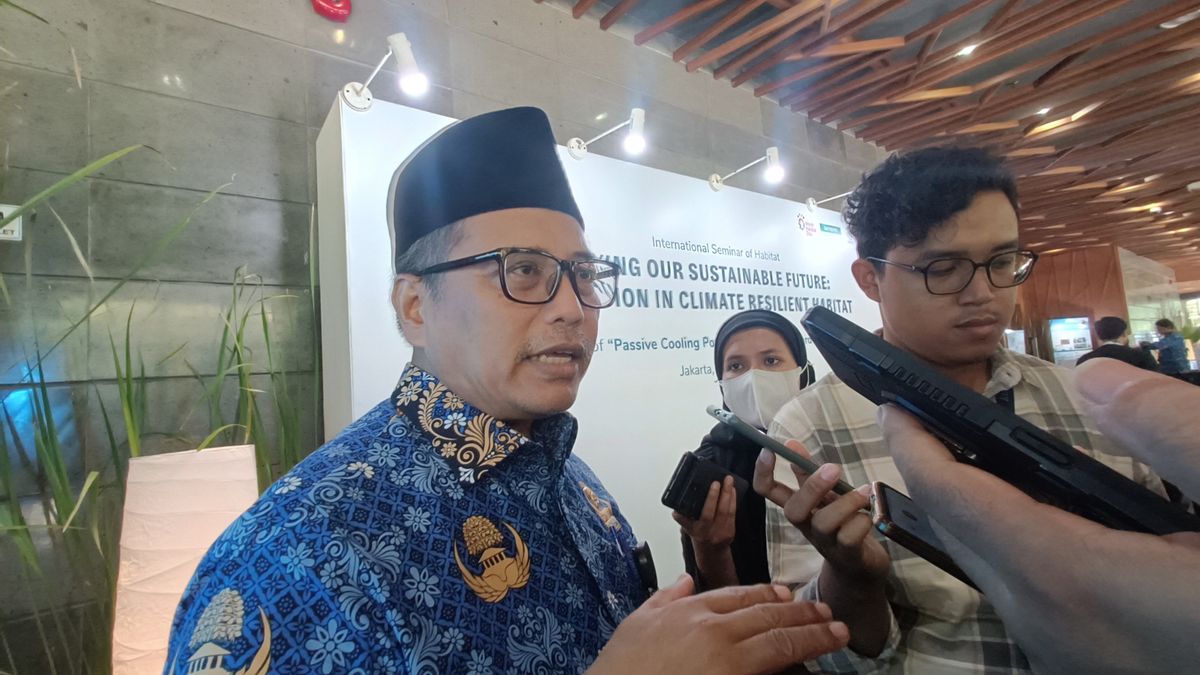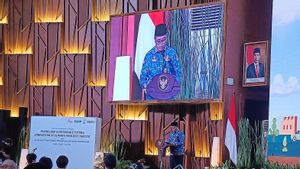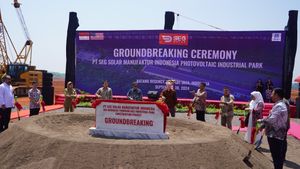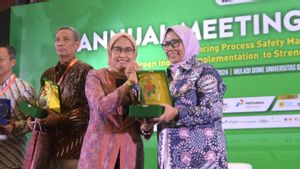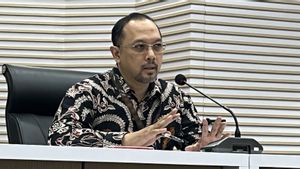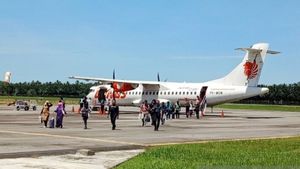JAKARTA - The building sector is said to be one of the largest contributors to greenhouse gas emissions. The Ministry of Public Works and Public Housing (PUPR) will also build buildings with a sustainable concept based on a climate zone map.
"The building sector is the responsibility and task given to the Ministry of Public Works and Public Housing and is one of the main contributors to greenhouse gas emissions," said PUPR Secretary General Zainal Fatah on the agenda of launching the Climate Zone Map for Pasif Cooling and Standard Climate Data in the Sustainable Building Development Process and the International Seminar entitled "Paving Our Sustainable Future: Innovation in Climate Resilient Habitat" at the PUPR Ministry Auditorium, Jakarta, Tuesday, October 1.
Zainal Fatah said that currently the building sector accounts for one-third of greenhouse gas emissions. Even so, this sector has great potential for energy savings and emission reduction.
"We note that (the building sector) accounts for a third of total gas emissions. On the other hand, the building sector also promises great potential for energy savings and emission reduction," he said.
He assessed that climate zone maps to weather data are very important as a reference in building buildings with a sustainable concept and saving energy. This has also been done in several developed countries.
"On the other hand, several countries in the world, both developed and developing countries, have mapped their climate zones for sustainable building designs. Thus, we also provide or receive potential energy savings for each zone. They also provide standard weather data for these purposes," he said.
With the climate zone map, sustainable building development can pay attention to the difference in the internal and outdoor temperature that makes the building 4-5 degrees colder. This step can reduce the use of Air Conditioner (AC).
"We had an example earlier in Tegal, earlier what was conveyed in the presentation also that the temperature difference between the outside and inside could reach a difference, yes. So, it's 4-5 degrees cooler, yes. So if it's 30 degrees outside, inside it means around 26-25 degrees. It's more comfortable, yes, without an air conditioner," continued Zainal Fatah.
In designing the climate zone map, Zainal explained that there were several parties involved other than the Ministry of PUPR. Some of these parties are the Meteorology, Climatology and Geophysics Agency (BMKG) and Kagoshima University and Hiroshima University from Japan.
"Currently, we have a climate zone for passive cooling potential and standard weather data. This has been realized thanks to good collaboration between us, the Ministry of Public Works and Public Housing, the Meteorology, Climatology and Geophysics Agency, Kagoshima University and Hiroshima University, of course with full support from the Japan International Cooperation Agency (JICA)," he said.
SEE ALSO:
According to Zainal Fatah, the map will have an impact on sustainable development. This includes infrastructure development in Indonesia.
Zainal Fatah also considered this step in accordance with Indonesia's commitment to reduce greenhouse gas emissions consisting of reducing national greenhouse gas emissions from 29 percent to 31.80 percent with its own efforts and from 40 percent to 42.3 percent with international assistance.
Meanwhile, the Director of Development for Settlement and Housing Engineering at the Ministry of PUPR, Dian Irawati, explained that the scheme used in climate zone research is a grant scheme.
"Grants, not cooperation. So, for this research we have a doctoral program as well, that's from PUPR. There are two PUPR, then from BMKG there is one. Then from Gajah Mada, ITB and ITS there are doctoral programs, then master programs also from PUPR and BMKG. So, this research program can be implemented immediately," he explained.
The English, Chinese, Japanese, Arabic, and French versions are automatically generated by the AI. So there may still be inaccuracies in translating, please always see Indonesian as our main language. (system supported by DigitalSiber.id)
